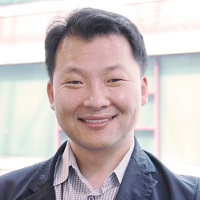
Hak Soo Choi, Ph.D.
|
Investigator, Assoc Prof (M) Gordon Center for Medical Imaging, Mass General Research Institute |
|
Associate Professor of Radiology Harvard Medical School |
Research Interests
Research Narrative
Research website
BENMD
Publications
| hchoi12@mgh.harvard.edu |
| 6177265784 |
|
Radiology CNY-Building #149 149 13th Street 5420 Boston, MA 02129 |
